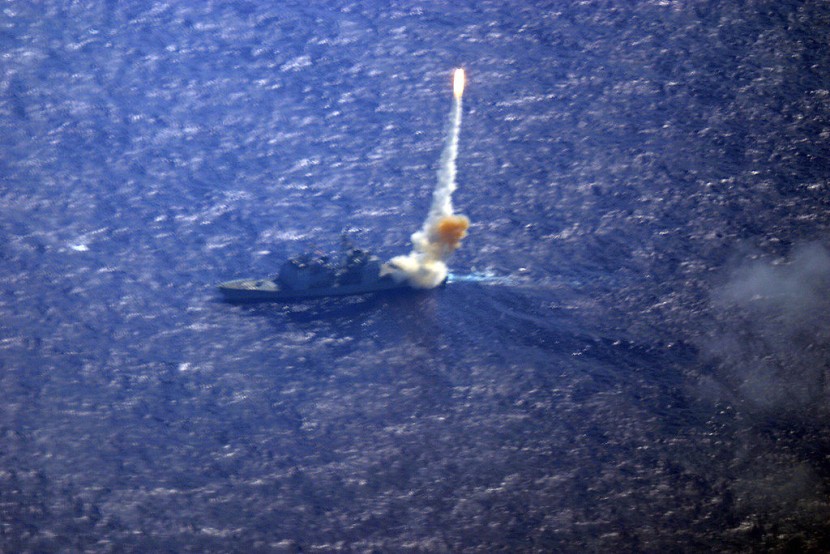
The US Department of Defense reported that a hypersonic missile system flight test in Hawaii suffered a failure, causing a new letdown to a weapons development program that has been struggling in recent months, as rival nations advance military technology.
In a statement, Pentagon spokesman Navy Lieutenant Commander Tim Gorman explained that the failure was caused by "an anomaly that occurred following ignition of the test asset" as per a report from Bloomberg.
The official added: "Program officials have initiated a review to determine the cause to inform future tests. While the Department was unable to collect data on the entirety of the planned flight profile, the information gathered from this event will provide vital insights."
Despite the failure, the defense department stated in an email: "the Department remains confident that it is on track to field offensive and defensive hypersonic capabilities on target dates beginning in the early 2020s." However, it did not disclose further information on the test conducted on Wednesday.
What Caused The Failure?
The trial was the second failed test flight of the Conventional Prompt Strike prototype weapon. The missile failed to leave the launch pad during its first flight test in October due to a booster malfunction. The Virginia-class submarines and Zumwalt destroyers were intended to equip with such weapons.
The Army is developing a land-based version of the weapon with its two leading contractors Lockheed Martin Corp. and Northrop Grumman Corp, according to a report published by South China Morning Post.
The Pentagon is under pressure to utilize US hypersonic weapon because rivals Russia, China, and North Korea are moving forward with the technology. These technologies can escape detection by traveling at speeds more than five times the speed of sound while gliding on a path that can be easily maneuvered to deliver nuclear warheads.
Read Also : China's New Aircraft Carrier Poses Potent Threat to the US, Allies in a Power Struggle for the Indo-Pacific
China is investing heavily in hypersonic weapons, putting one in orbit in July of last year that flew 25,000 miles (40,000 kilometers) in more than 100 minutes of flight, according to the top US nuclear commander. In January, North Korea conducted two separate launches of hypersonic missile systems that traveled several hundred kilometers.
Russia debuted a hypersonic air-to-ground missile in its attack on Ukraine. Adversaries do not have to meet the rigorous standards of the US defense acquisition system or face public scrutiny over delays and failure.
Defense Secretary Austin Says US Must Be Cautious in Developing Hypersonic Weapons
When Defence Secretary Lloyd Austin testified before the House armed services committee in April, lawmakers lambasted the slow pace of the hypersonic programs. Republican Representative Mike Turner of Ohio remarked that the US is already "behind" its "adversaries" in such military technology.
Austin acknowledged Turner's comments that but he stressed that they should be "careful" because "hypersonic is a capability" but "it's not the only capability." The defense chief also mentioned that he had "engaged industry" to ensure the advancement of US hypersonic weapon.
In May, the Air Force successfully tested the Air-launched Rapid Response Weapon (ARRW). Brig. Gen. Heath Collins, the Air Force's Program Executive Officer for weapons called it a "major accomplishment."
Before its most recent accomplishment, the ARRW program had already had some setbacks and delays throughout its development, including three flight test failures, per CNN report.
In March, Pentagon successfully tested the Hypersonic Air-breathing Weapon Concept (HAWC). Though, it was kept under the radar for two weeks to prevent tensions with Russia from rising just before President Joe Biden's trip to Europe.
Related Article : North Korea Lost Millions of Dollars After Stolen Cryptocurrency Wiped Out, Putting Pressure on Pyongyang's Escalating Nuclear Program








